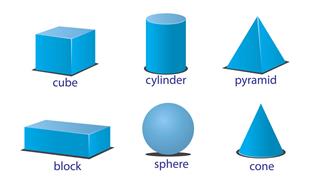
The only thing you need to learn to draw is practice, practice, practice – and a basic skill set that translates to other styles. Do a little bit every day, and you’ll surprise yourself soon enough.
Even if you aren’t planning a career as a sketch artist, passable drawing skills are a nice thing to have. It’s free entertainment, and you might even create something beautiful while you’re at it. But be warned – drawing is a ‘use it or lose it’ skill. Perhaps you were a pretty decent artist at one time, but you haven’t picked up a pencil in years – it doesn’t take long for a pencil to feel foreign in your hand.
These simple exercises will help you get back into the swing of things. All you need is a pencil and a stack of paper…and patience! Don’t expect to pick it up right away. But if you can dedicate about 20 minutes every day to getting the feel for it, you’ll be on your way to portraiture in no time.
Lines

To be honest, hard lines don’t figure into pencil drawing much at all unless you’re drawing animation-style. But they’re the most basic thing to drill when you’re first dipping into the page, and they teach you a fair amount about pressure, control, and how to direct your eyes.
Draw two points anywhere on the page, then connect them with a straight line. Don’t use any guides, just draw freehand. It takes a surprising amount of practice just to connect two simple dots with a straight, even line. Practice this until your line looks like it was drawn with a ruler, then attempt a few freehand. Draw them from left to right, right to left, toward you and away from you. Experiment with different pencil positions and observe the effect it has on the line.
Basic Shapes

Now that you have lines down pat, try connecting them to form basic geometric shapes. Draw three dots and connect them to form a triangle. Draw four dots and make a square or rectangle. Try drawing the shapes without the dots, then try drawing an equilateral triangle, a perfect square, and an octagon.
These shapes are good spatial practice as you’re training your eye to accurately measure angles and distance – this will come in handy when you try to draw subjects from observation. You won’t necessarily be using these shapes, but your trained eye will be more able to translate what you see into marks on the page.
Curves

Start drawing circles over and over again. Don’t even lift your pencil from the page. Just draw the same circle in the same spot over and over again until your paper starts to tear through. Then move over a bit and do it again. You’ll notice that as you go over the circle, it becomes more perfect – the darkest line is the average of all the circles you’ve drawn. If you notice that even the dark line is droopy or bulging somewhere, it tells you that something’s throwing you off in that area. Try keeping your wrist still and drawing from the shoulder. Keep drawing circles until they look like you used a compass.

Then try curves. Draw random dots all over the page, then connect them in a smooth, continuous curve, without jagged edges or angles. Try wide arcs and tight turns. Fill the page. Keep practicing until it stops looking like scribble and starts looking planned.
Light and Shadow

Developing an eye for light and shadow is critical to showing dimension in your drawings. Draw a variety of shapes on the page – circles, cylinders, cubes, etc. Use all different sizes and a variety of angles, then draw an arrow somewhere on the page – this is your light source. Your job is to shade all those shapes as if your light source was shining on them from however far away it appears to be on the page.
Decide where the light hits the object, and where it reflects off the ground. Don’t forget that the object itself will cast a shadow – figure out the placement and shape. Start shading the lightest areas with a very soft touch, then gradually press harder as the shadow gets darker. When you’re done, going back in and darkening the deep shadows even more can really add extra ‘pop’. Practice this exercise until you don’t even have to think about it anymore.
These exercises are difficult, and most definitely frustrating, but very much worth the effort. Don’t just do one at a time – practice at least a little bit in each area every day until it becomes second nature, then move onto drawing from life or photographs. Once you master that, you’ll have a much easier time relating what’s in your mind onto the page.








